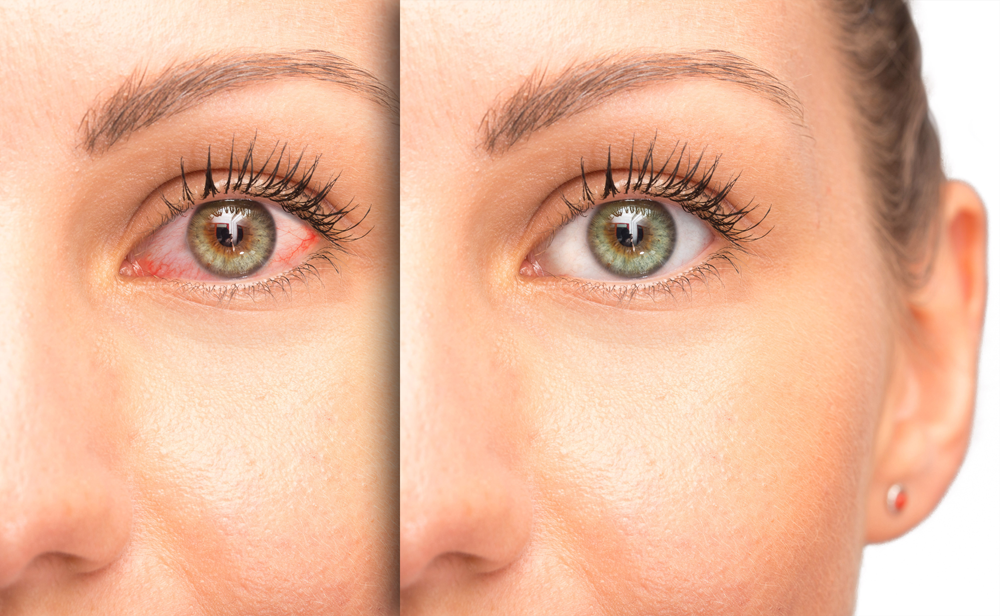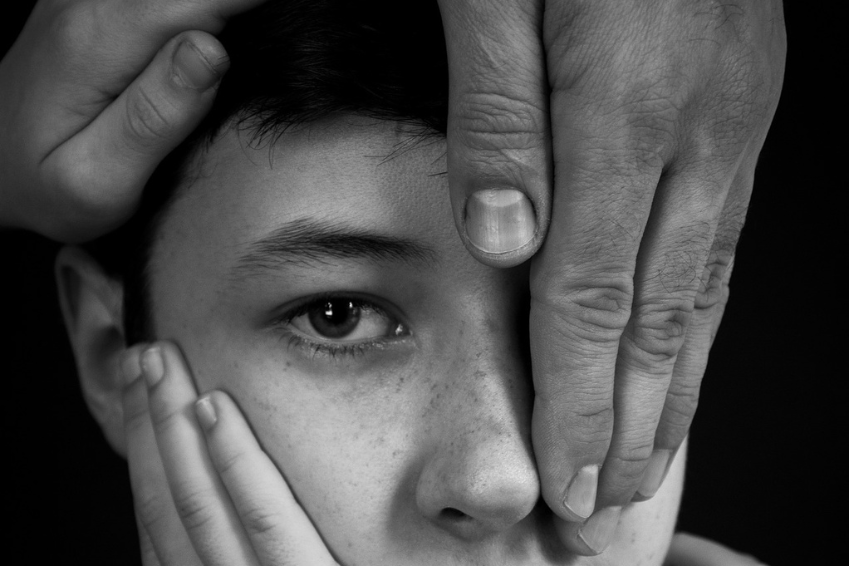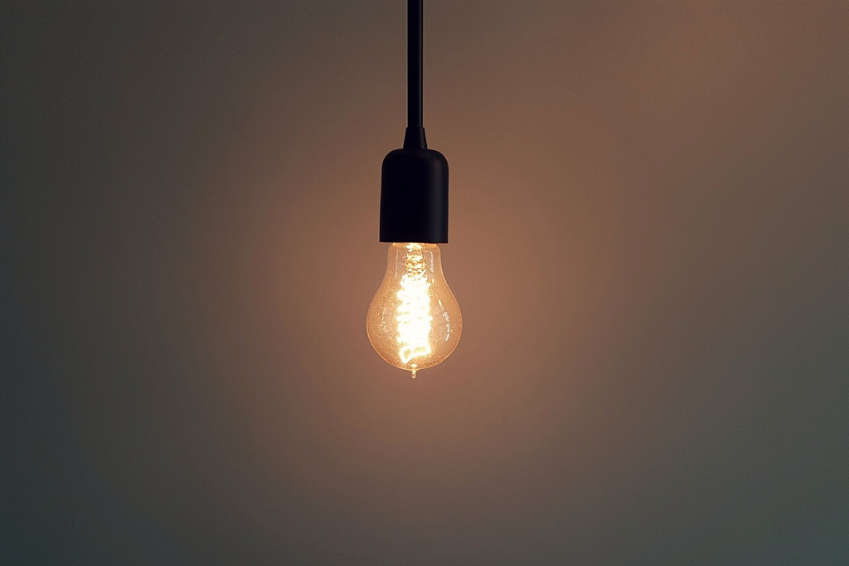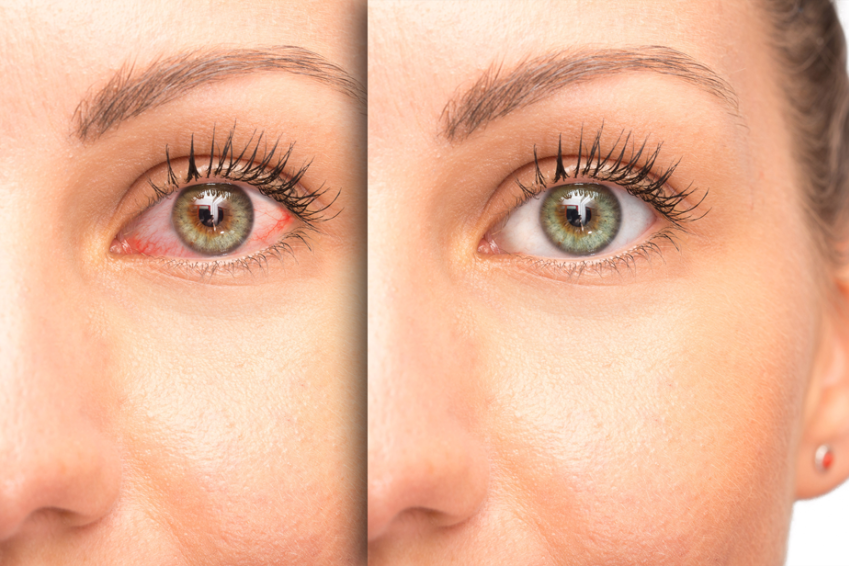What are the nine most important Glaucoma symptoms?
Characteristic for Glaucoma is that it shows almost no symptoms. Thus, early detection is only possible through an ophthalmological screening. The measurement of the intraocular pressure and the determination of the visual field enable a reliable diagnosis.
By the way, both examinations are completely painless. Only at a very advanced stage do Glaucoma symptoms occur and vision becomes limited.
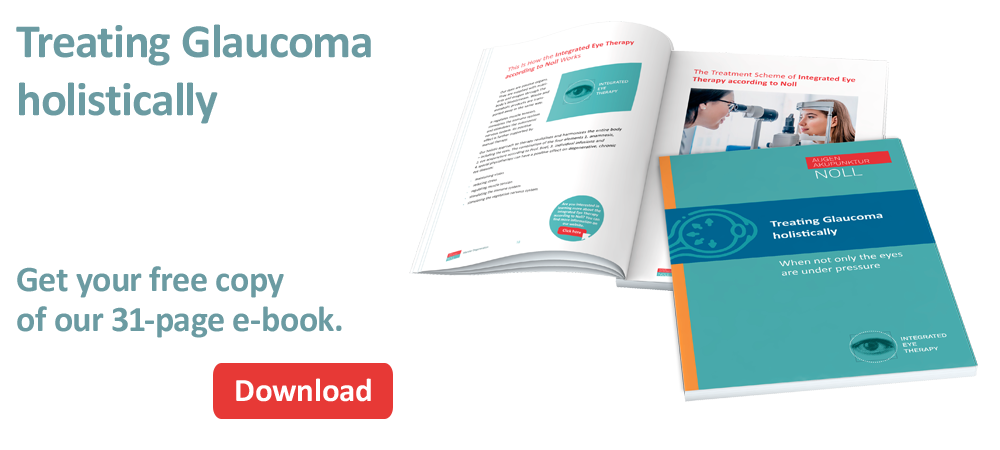 Possible Glaucoma symptoms: reddened eyes, headache, blurred vision, visual disturbances, visual field defects
Possible Glaucoma symptoms: reddened eyes, headache, blurred vision, visual disturbances, visual field defects
The increased intraocular pressure significantly disturbs the blood supply and nutrition of the sensitive nerve cells in the eye. Glaucoma symptoms can include: reddened eyes, headaches, blurred vision and visual disturbances, so-called visual field defects.
The following is a brief description of the most important Glaucoma symptoms:
Increased intraocular pressure (IOP) as a Glaucoma symptom
Elevated intraocular pressure is a characteristic feature of many forms of Glaucoma, especially open-angle Glaucoma. This increased pressure occurs due to an imbalance between the production and outflow of the eye’s fluid (aqueous humour), resulting in an increase in pressure inside the eye.
However, it is important to note that not all Glaucoma patients have increased intraocular pressure. Some forms of Glaucoma, such as normal pressure Glaucoma, develop despite normal intraocular pressure.
Therefore, other indicators such as optic nerve damage, visual field changes and other typical symptoms of Glaucoma should be carefully monitored and investigated.
Elevated intraocular pressure (IOP) can be considered both a symptom and a cause of Glaucoma.
Glare sensitivity one of many Glaucoma symptoms
People who suffer from Glaucoma may be particularly sensitive to bright light, such as bright sunlight or the lights of drivers at night. This glare sensitivity can cause discomfort, pain or temporary vision loss.
Affected people tend to squint or blink their eyes frequently to reduce the glare. Glare sensitivity can affect daily activities and impair vision.
Visual deterioration (especially in the peripheral field of vision – visual field loss)
The Glaucoma symptom “Gradual loss of peripheral visual field” refers to one of the most characteristic and common features of Glaucoma. The visual field is the area we can see when we straighten our eyes and fixate, ignoring eye movements. It includes everything we perceive without moving our eyes.
In Glaucoma, especially the common open-angle Glaucoma, there is progressive damage to the optic nerve, which is responsible for carrying visual signals from the eye to the brain.
The damage usually occurs first in the peripheral (outer) region of the optic nerve, which is responsible for processing information from the outer part of the visual field.
As the optic nerve is damaged, there is a gradual loss of the peripheral visual field. This means that the sufferer loses the ability to perceive objects or events that are to the side or up/down while looking straight ahead.
This often gives the impression of ‘tunnel vision’, where the central field of vision is maintained but the outer area is progressively narrowed.
It is important to understand that this loss of visual field often occurs gradually and unnoticed, as the central field of vision initially remains unaffected.
Most people do not notice the loss of their peripheral vision until late in the disease, when considerable damage to the optic nerve has already occurred.
Tunnel vision or reduced field of vision as a Glaucoma symptom
Tunnel vision or reduced field of vision is a symptom that can occur in Glaucoma. It describes a situation where the peripheral field of vision is gradually lost while the central field of vision remains largely intact.
This results in the affected person only being able to perceive a limited area, similar to looking through a tunnel.
As a result, lateral and upper/lower areas of the field of vision are affected, while vision in the centre is still possible. This limitation can interfere with daily activities and make it difficult to recognise objects and hazards in the environment.
Impaired vision and reduced contrast vision in low light conditions
The Glaucoma symptom “impaired vision in low light” occurs in Glaucoma because of the damaging effect on the optic nerve. Affected people have difficulty seeing well in low light or dark environments.
This is because the damaged optic nerve can transmit fewer light-sensitive signals to the brain, resulting in a reduced ability to process visual information in low light conditions.
People with this Glaucoma symptom may have difficulty reading in dimmed rooms or recognising contours and obstacles in the dark.
Changes in colour vision (especially in advanced Glaucoma)
Affected people may have difficulty distinguishing colours accurately or certain shades of colour may look different to them than to people with normal vision.
This phenomenon may be due to damage to the optic nerve and the resulting change in signal transmission from the eye to the brain. The recognition of colour nuances may be impaired, which can affect the quality of life.
Occasional eye pain or headache
The Glaucoma symptom of eye pain or headache may occur especially during acute Glaucoma attacks, such as in narrow-angle Glaucoma. This pain is often described as intense and stabbing and may occur in one or both eyes.
Eye pain may be accompanied by concomitant symptoms such as headache, nausea and vomiting. It is important to note that not all Glaucoma patients experience eye pain, as many forms of Glaucoma are asymptomatic at first.
Therefore, other signs such as deterioration of vision or changes in the field of vision should also be noted.
Reddening of the eye (especially in acute narrow-angle Glaucoma)
The redness of the eye may occur especially in acute narrow-angle Glaucoma. In narrow-angle Glaucoma, there is a sudden and sharp increase in intraocular pressure due to a blockage of the angle of the ventricle, which disrupts the outflow of eye fluid.
This increased pressure can lead to dilated and reddened blood vessels in the eye, which is visible as redness. The redness may be accompanied by accompanying symptoms such as severe eye pain, blurred vision, nausea and vomiting.
Acute narrow-angle Glaucoma is a medical emergency and requires immediate medical attention to lower intraocular pressure and preserve vision.
If anyone experiences sudden eye pain and redness, an ophthalmologist should be consulted immediately for appropriate diagnosis and emergency treatment.
See halos around light sources
This Glaucoma symptom is expressed by the affected person perceiving light sources, such as lamps or streetlights, surrounded by a bright ring.
This can be an indication of a clouding of the eye lens, corneal oedema or an increase in Glaucoma pressure and requires specialist clarification.
First steps when a Glaucoma symptom occurs
If you notice any symptoms of Glaucoma, consult an ophthalmologist immediately. Tell the doctor about your symptoms and have a thorough eye examination.
Follow the recommended treatment and schedule regular follow-ups. A healthy lifestyle is also important. Early diagnosis and treatment are crucial to protect vision.

